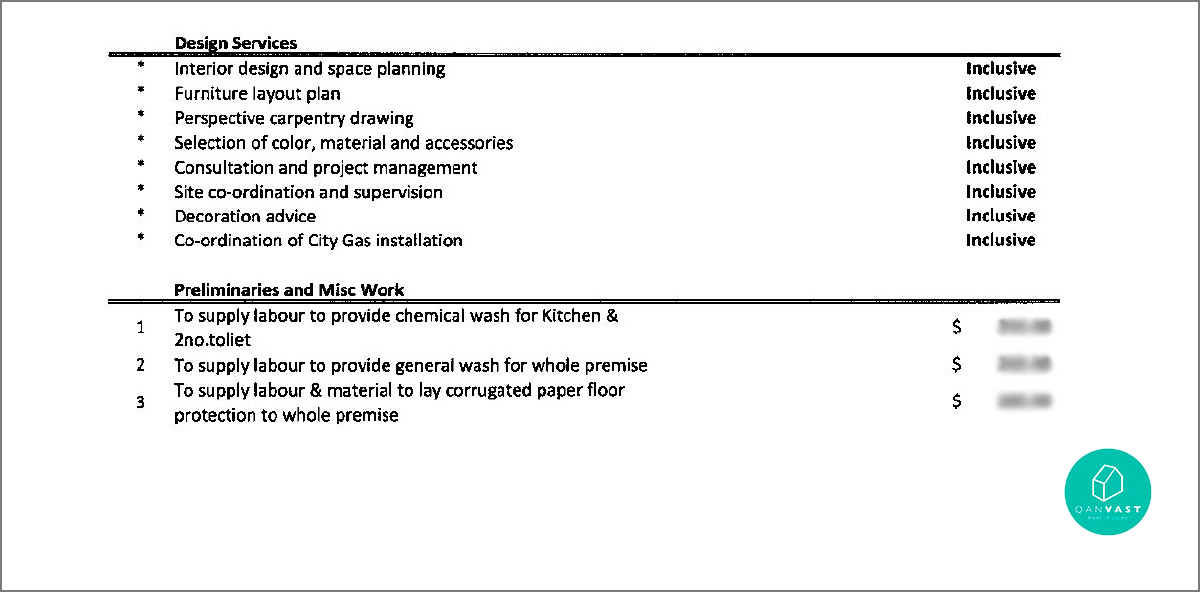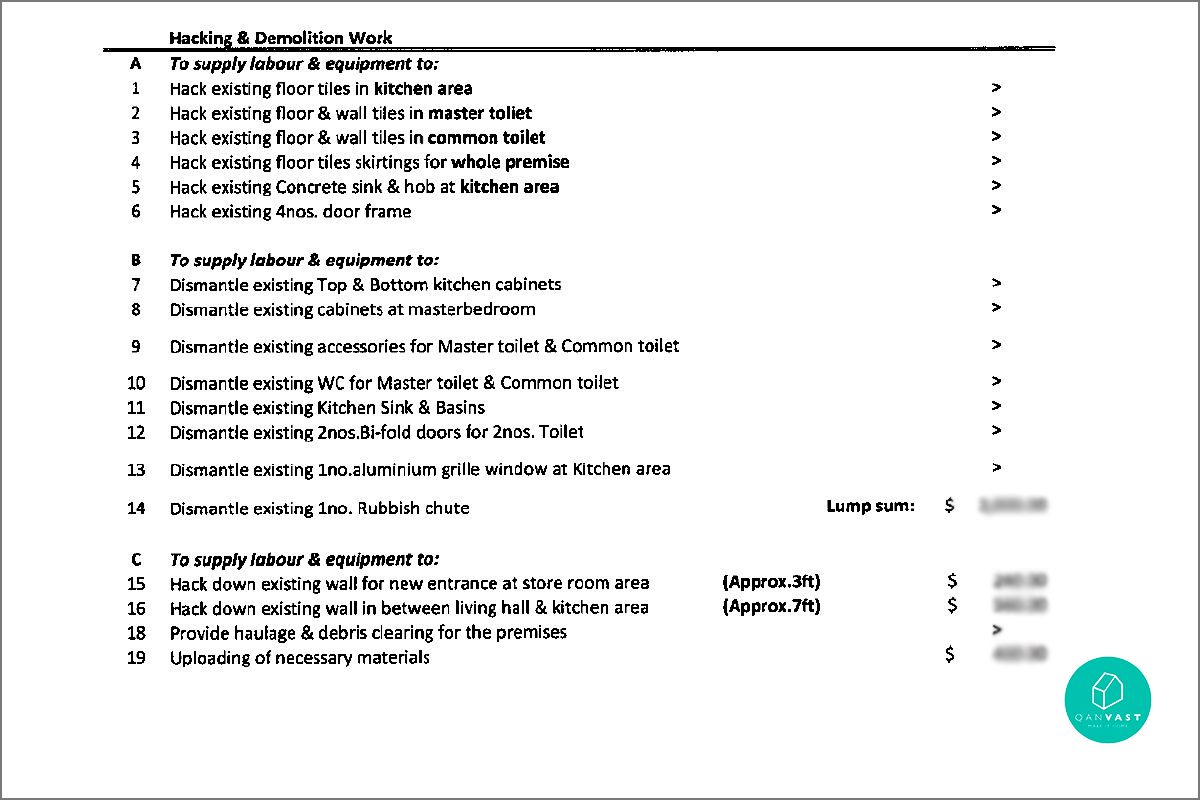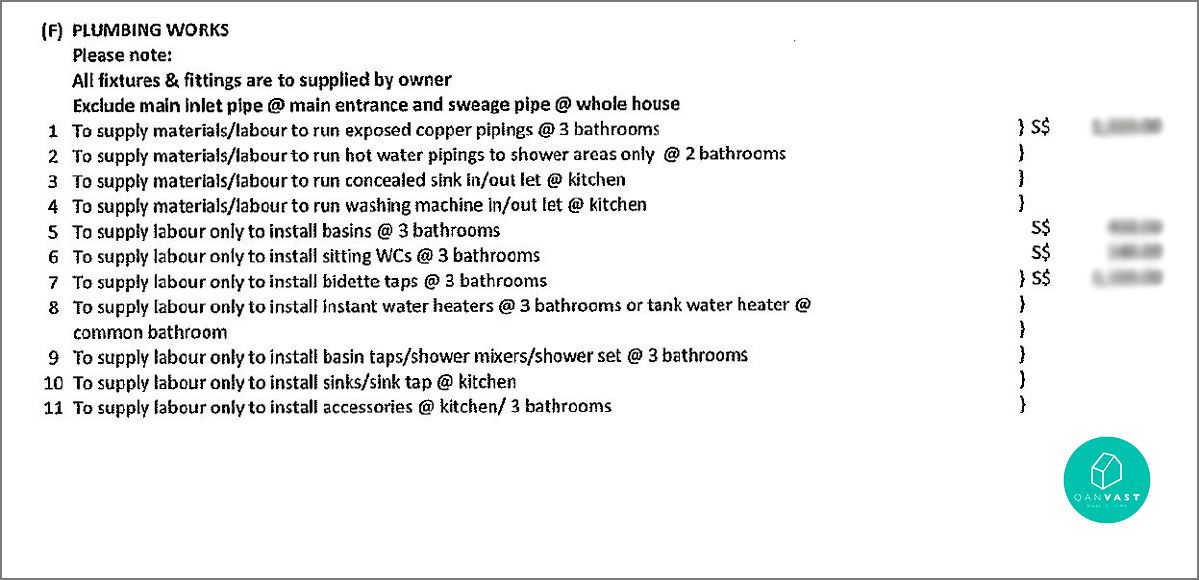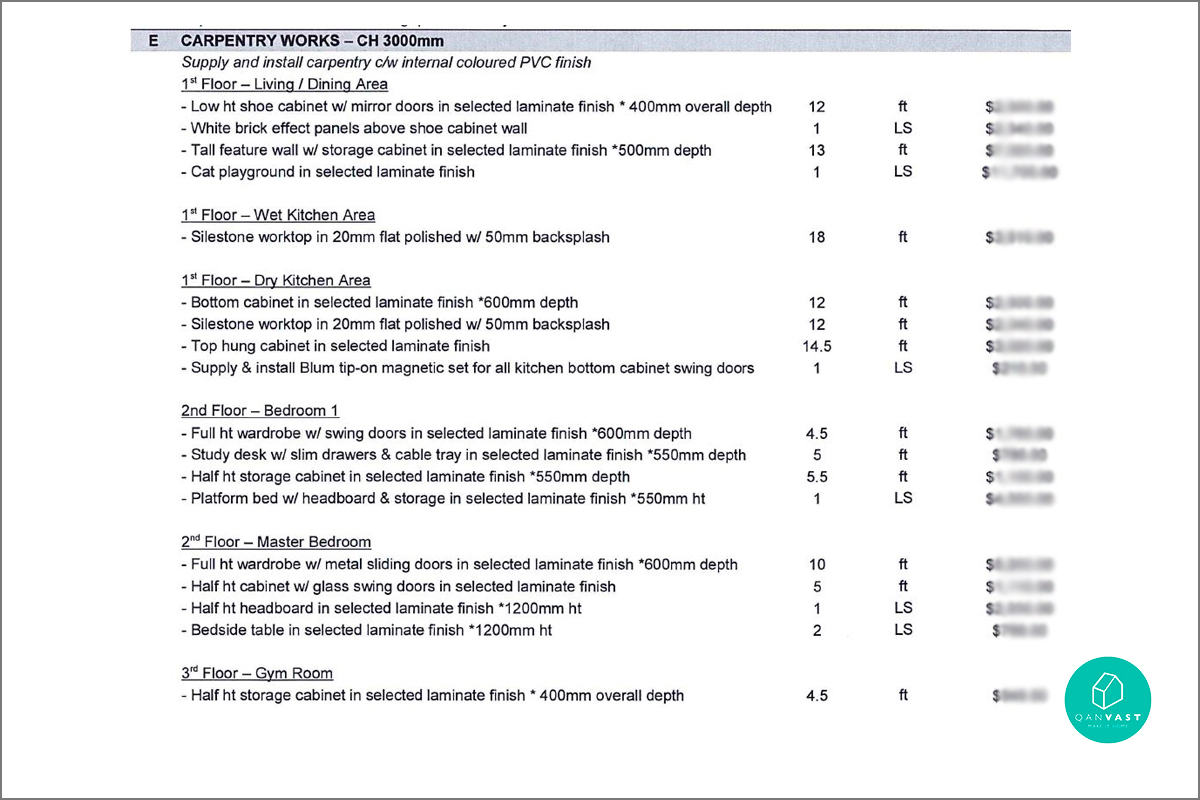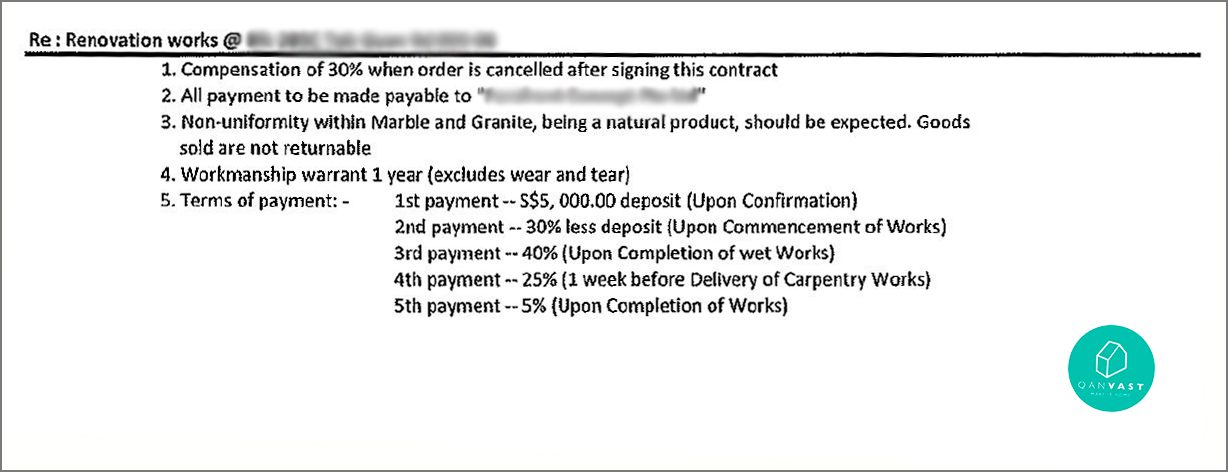Before plunging head first into your renovation, having an idea of how the entire process works will definitely come in handy – and it all begins with straightening out the paperwork. These 4 key items a renovation contract should have will ensure your home makeover goes as planned.

What Is A Well-Written Renovation Contract, And Why Is It Important?
Getting everything in black and white is important – that means laying out the entire scope of the project, including an exhaustive list of all works to be performed, and any costs involved. This helps prevent any form of ambiguity that may arise during the course of your renovation, so be sure to pore through and understand the contract’s details before signing it.
A basic renovation contract should outline the following details clearly:
1. Scope Of Work
On top of providing a list of materials used, this section details the stages of your renovation and the various tasks done by your contractor, which commonly include:
a. General Services
Consultation, project management and site coordination from pre-renovation preparation work, such as design plans, to post-renovation tasks like chemical and general washes.
b. Hacking & Demolition Works
Tasks related to the removal and disposal of pre-existing structures and/or old fittings, such as flooring, non-load bearing walls, doors and windows.
c. Electrical Works
Common examples include the installation of additional power sockets, auxiliary items, fixed appliances and wiring covers. Sometimes, these tasks are performed by an independent contractor, and hence, billed separately.
d. Plumbing
Common examples include the running of pipes and installing water fittings, such as sinks and WCs, and are mainly carried out in the bathroom, kitchen, and yard.
e. Carpentry
Concerns the installation of various cabinetry and their internals for the kitchen, bedrooms and other living areas.
2. Cost Breakdown

Often listed side-by-side each entry in “Scope of Work”, this part details both labour and material costs for each renovation task, such as the cost of removing old floor tiles as well as supplying and laying new ones.
If you’re feeling unsure about the overall price quotation, try using the Qanvast Renovation Budget Calculator to get a cost estimate and see how close things are.
3. Payment Schedule
This gives you an idea of when your payments are due and will stipulate its terms and conditions.
Note that exact details may vary across firms, but payments typically stretch across the entire length of the project, right from the start (when a deposit of about 10-15% of the total bill is paid) to the end (typically, the remaining 5% of the total bill), with additional instalments to be paid upon the completion of key milestones.
Other important payment terms are also listed here. For example, the compensation your contractor is entitled to should the project be terminated prematurely, and goodwill discounts (if any).
4. Defects Liability Period

Just like any big ticket purchase, a form of warranty is guaranteed following the completion of your home renovation.
Commonly referred to as the Defects Liability Period (DLP), this warranty lasts up to 12 months, during which your contractor is liable for repair costs due to faults resulting from defective materials or imperfect workmanship.
This article was first published on Qanvast, a local interior design platform for homeowners passionate about their home design. Download the free app to get inspired by thousands of local home ideas and connect with interior designers.
Want to find the best mortgage rate in town? Check out our free comparison service to learn more!
Read more of our posts below!


